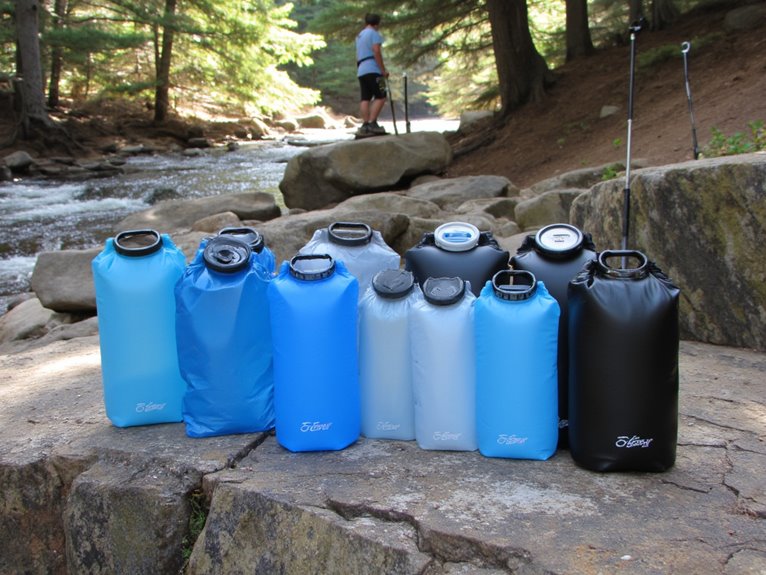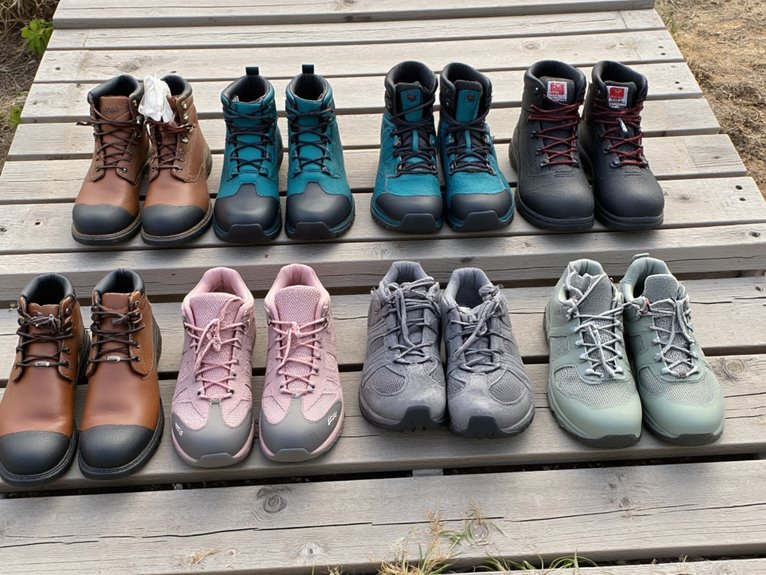Is It Ok to Ski Without Ski Pants?
Skiing without ski pants can be a liberating experience, but it's essential to weigh the benefits of freedom of movement against the risks of exposure to harsh alpine conditions and potential hazards. In warm weather, shedding heavy gear can be a welcome relief, but in colder climates, ski pants provide vital protection from wind, snow, and ice. By forgoing ski pants, you may compromise on safety and comfort. To make an informed decision, consider the type of skiing you'll be doing, the weather conditions, and your personal priorities. Delve deeper into the world of skiing to discover the nuances that will enhance your experience.
We are supported by our audience. When you purchase through links on our site, we may earn an affiliate commission, at no extra cost for you. Learn more. Last update on 10th December 2025 / Images from Amazon Product Advertising API.
Skiing in Warm Weather Conditions
Warm weather skiing, a scenario often met with skepticism, can be a liberating experience, allowing skiers to shed layers and experience the rush of cruising down the slopes unencumbered.
Without the bulk of heavy winter gear, skiers can focus on their technique, feeling the wind in their face and the sun on their skin.
In warm weather conditions, skiers can opt for lightweight, breathable clothing, providing freedom of movement and comfort.
This allows for a more carefree and enjoyable skiing experience, where the focus is on the thrill of the ride rather than battling the cold.
As the sun shines bright, skiers can soak up the warmth and revel in the joy of skiing in its purest form.
Casual Skiing Vs Serious Skiing
While skiing without the burden of heavy winter gear can be a liberating experience, a key distinction exists between casual skiing and serious skiing, with the latter requiring a level of discipline and commitment that sets it apart from a mere recreational pursuit.
Casual skiing is often characterized by a relaxed attitude, where the primary focus is on having fun and enjoying the mountain scenery.
Serious skiing, on the other hand, demands a high level of physical fitness, technical skill, and mental toughness. It involves a deliberate approach to training, equipment selection, and risk management.
For serious skiers, the goal is often to push personal limits, tackle challenging terrain, and refine their skills.
Understanding this fundamental distinction is essential for determining whether skiing without pants is a viable option.
Ski Pants as Protective Gear
Beyond their obvious role in keeping legs warm, ski pants serve as critical protective gear, shielding skiers from the harsh alpine environment and potential hazards on the slopes.
They provide a barrier against wind, snow, and ice, protecting skin from harsh weather conditions.
In addition, ski pants offer protection from crashes and falls, which can be a common occurrence, especially for beginners.
Shielding against sharp objects and rough surfaces is a key function of ski pants, which also protect from snow and ice abrasion.
They provide padding and cushioning in case of falls, and offer wind and water resistance to keep legs dry.
Furthermore, ski pants prevent scrapes and cuts from ski edges and other equipment.
Snow and Water Resistance Matters
Ski pants' ability to resist snow and water is vital, as even a small amount of moisture can compromise their insulating properties and leave legs cold and uncomfortable.
Water-resistant treatments and breathable membranes, such as Gore-Tex or similar technology, are essential features to look for in ski pants. These technologies prevent water from penetrating the fabric, guaranteeing that you stay dry and warm.
Additionally, a water-repellent coating can help to shed snow and water, reducing the risk of moisture seeping into the pants.
When choosing ski pants, prioritize snow and water resistance to guarantee a comfortable and enjoyable skiing experience.
Layering Up for Cold Weather
When braving the cold mountain air, a well-crafted layering system is essential for peak performance and comfort.
The foundation of this system lies in the base layers, which provide moisture-wicking properties to keep skin dry and comfortable.
Base Layers Matter
The foundation of a warm and comfortable skiing experience lies in choosing the right base layers, as these next-to-skin garments play a critical role in regulating body heat and moisture.
A good base layer should keep you dry and comfortable, allowing you to focus on the slopes.
Look for moisture-wicking fabrics like merino wool, polyester, or nylon.
Choose a breathable, quick-drying fabric to prevent overheating.
Consider a base layer with a fitted silhouette for optimal performance.
Opt for a layer with a high warmth-to-weight ratio for maximum comfort.
Don't forget to consider the activity level and temperature range you'll be skiing in when selecting your base layer.
Mid-Layers Add Warmth
Most skiers find that adding a mid-layer provides the extra warmth needed to tackle cold weather conditions.
This layer should be breathable, moisture-wicking, and insulating, trapping warm air next to the skin while allowing moisture to escape.
Fleece, synthetic, or down-filled mid-layers are popular choices, offering varying levels of warmth and compression.
A good mid-layer should fit comfortably, allowing for a full range of motion, and be adjustable at the cuffs and hem to prevent heat loss.
Look for features like zip-up collars, pockets for storing small items, and a DWR finish to repel snow and wind.
Alternative Options for Beginners
Beyond traditional ski lessons, beginners can discover alternative instruction methods that cater to their unique learning styles and preferences. These alternatives provide a fresh approach to learning, helping beginners build confidence and skills on the slopes.
Some alternative options for beginners include:
- Private instructors who offer one-on-one coaching
- Online tutorials and video lessons for self-paced learning
- Group lessons with a focus on social learning and camaraderie
- Ski camps and workshops that combine instruction with adventure
- Mobile apps that provide interactive ski lessons and exercises
Style Vs Practicality on Slopes
Every skier must confront the eternal conundrum: sacrificing style for practicality or vice versa, as they navigate the slopes.
The fashion-conscious skier may prioritize a stylish outfit, but this may compromise on functionality. On the other hand, prioritizing practicality may result in a less-than-flattering ensemble.
The key is finding a balance between the two. A well-designed ski outfit can provide both style and functionality.
Look for water-resistant and breathable fabrics, adjustable cuffs, and articulated knees for superior mobility. By choosing gear that combines form and function, skiers can enjoy a comfortable and confident experience on the slopes.
Ultimately, the best approach is to prioritize practicality while still incorporating personal style, ensuring a fun and enjoyable skiing experience.



